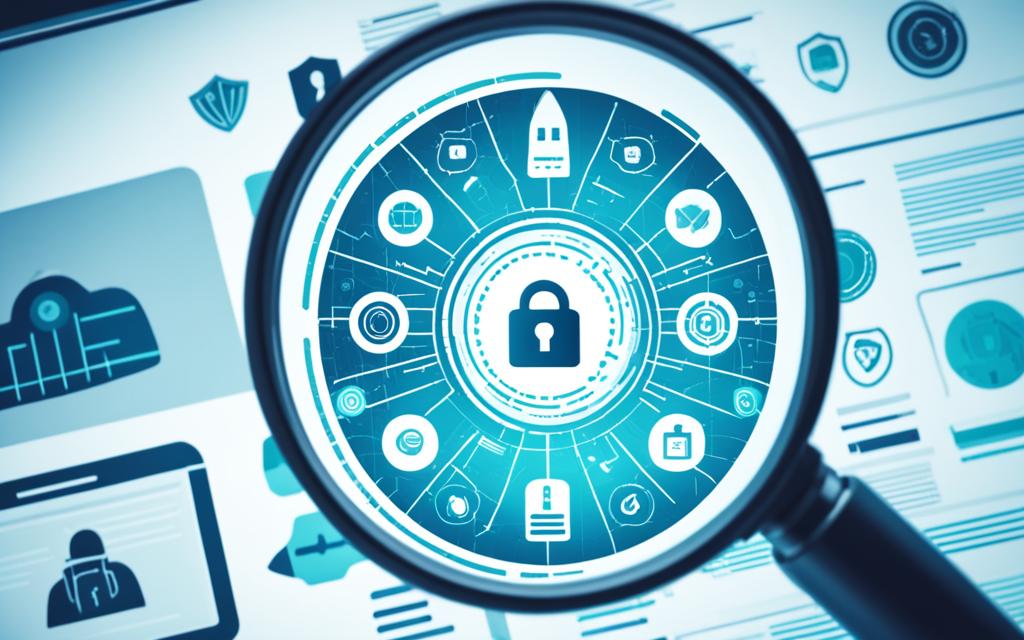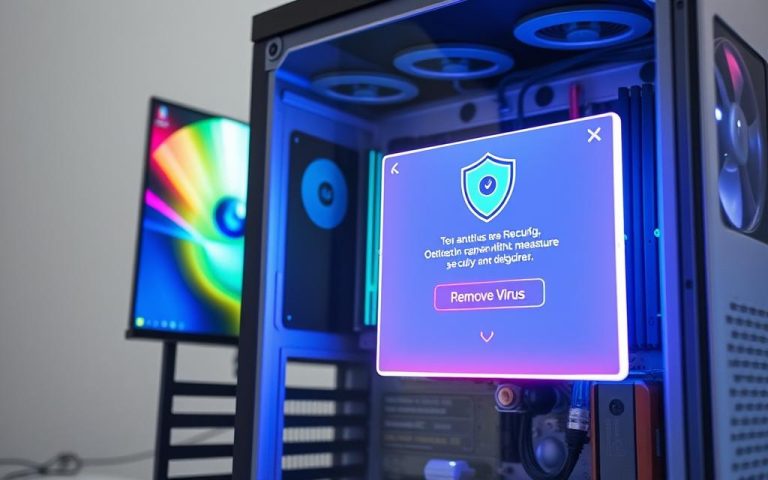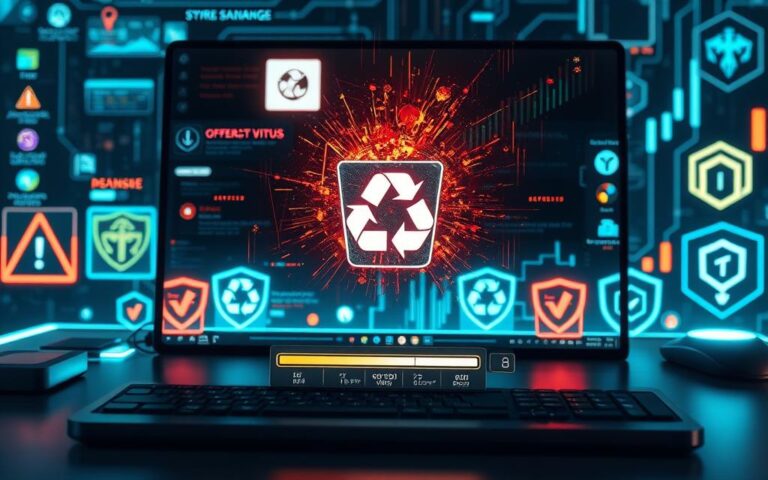Cybersecurity Cleanup for E-commerce Websites
In today’s digital landscape, e-commerce websites play a pivotal role in the success of businesses. However, alongside the convenience and profitability they offer, there lurks a persistent threat – cybercriminals. Malware attacks can have devastating consequences for e-commerce websites, leading to reputation damage, customer loss, and negative impacts on search engine rankings. It is paramount for businesses to prioritize website security and conduct regular website security checks to detect and remove malware.
Website security checks encompass various essential components. These include malware detection, swift and effective removal, and comprehensive website restoration. By implementing these measures, businesses can safeguard their online presence, maintain customer trust, and protect valuable data.
However, cybersecurity upkeep does not stop at the removal of existing malware. It requires a proactive approach and continuous monitoring to fend off new threats. Automated cybersecurity services, along with a robust website hosting provider with security features, can bolster your website’s defenses, providing immediate alerts and robust website hosting provider to combat emerging vulnerabilities.
In addition, leveraging trust seals – badges displayed on your website to indicate security measures and third-party verification – can significantly enhance customer trust. These seals serve as visual reassurances, affirming your commitment to cybersecurity and customer protection.
By investing in comprehensive cybersecurity cleanup services and implementing the necessary precautions, businesses can fortify their e-commerce websites against the ever-present danger of cyber threats. Stay one step ahead in the digital realm and protect your brand, reputation, and customers.
The Importance of Malware Removal
Malware poses a serious threat to websites and businesses. It can result in the theft of sensitive data, damage to a company’s reputation, and negative impacts on website rankings. Malware removal is crucial in order to protect website visitors and maintain the trust of customers.
Malware removal involves using targeted tools or expertise to detect and remove malware from infected files. By eliminating malware, businesses can effectively mitigate the cybersecurity threats posed to their websites. This process can be expedited through the use of file transfer protocol scans and the synchronization of changes back to the website environment.
Ensuring regular malware removal procedures not only protects website visitors but also preserves the integrity and functionality of the website itself. It helps to maintain a safe and secure online environment, reducing the likelihood of further infections and potential data breaches.
Implementing robust malware removal strategies is essential for businesses operating in the digital landscape. It helps safeguard valuable assets, preserve customer trust, and prevent costly cybersecurity incidents.
Reporting Malware Removal to Google
Once you have successfully removed malware from your website, it is crucial to report the removal to Google in order to minimize the impact on your site’s SEO. Taking this step will help restore the credibility and trustworthiness of your website in the eyes of both Google and your visitors. However, before submitting a request for a malware review, it is essential to ensure that your website is completely free of any malware.
During the reporting process, you may be required to provide evidence of site ownership and furnish relevant information about the steps you have taken to resolve the security issues. This verification step acts as a safeguard against fake reports and helps build trust between Google and website owners.
Submitting a malware review request to Google involves several important steps:
- Confirm malware removal: Before submitting your request, make sure that your website is completely free from any malicious software or code. Conduct a thorough scan and security check to ensure no traces of malware remain.
- Verify site ownership: Google requires you to confirm that you are the legitimate owner or administrator of the website in question. This verification process can be completed through various methods, such as adding a meta tag to your website’s HTML or linking your Google Analytics account.
- Compile necessary information: Prepare a comprehensive report outlining the steps you have taken to address the malware issue. Include details about the cleanup process, security measures implemented, and any changes made to prevent future infections.
- Submit the request: Once you have completed the above steps, navigate to Google Search Console and submit your malware review request. Be sure to provide all the required information accurately and concisely.
By following these steps and reporting the successful removal of malware to Google, you can minimize the negative impact on your website’s SEO and prevent further blacklisting. Ensuring the security and trustworthiness of your website is vital for maintaining a positive online presence and protecting your business.
| Benefits of Reporting Malware Removal to Google | Actions to Take |
|---|---|
| Restores SEO rankings | Ensure complete malware removal |
| Rebuilds trust with visitors | Verify site ownership |
| Protects online reputation | Compile necessary information |
| Prevents further blacklisting | Submit the request accurately |
Beyond Malware Removal
Malware removal is only the first step in ensuring website security. To prevent future infections and protect your website from potential threats, it is crucial to address vulnerabilities that led to the malware infection.
One effective way to identify and mitigate website vulnerabilities is through the use of website monitoring tools. These tools provide real-time monitoring and alert systems that notify you of any suspicious activities or vulnerabilities on your website. By monitoring your website regularly, you can detect and resolve security issues before they are exploited by hackers.
Another essential security measure is the implementation of a web application firewall (WAF). A WAF acts as a barrier between your website and potential threats, filtering incoming traffic and blocking malicious requests. It helps protect your website from common attacks such as SQL injections, cross-site scripting, and brute force attacks.
Furthermore, ongoing monitoring of Google search results and the Google Transparency Report can help you stay proactive in preventing or addressing blacklisting. By actively monitoring your website’s reputation and taking immediate action in case of blacklisting, you can maintain a positive online presence and prevent potential loss of visitors and customers.
By addressing vulnerabilities, implementing website monitoring tools, and utilizing a web application firewall, you can significantly enhance your website’s security and protect it from potential threats.
Website Vulnerabilities
| Vulnerability | Risk Level | Impact |
|---|---|---|
| Outdated plugins or software | High | Exploitation of known vulnerabilities |
| Weak passwords | Medium | Unauthorized access to sensitive information |
| Insecure file uploads | High | Execution of malicious code |
| Unvalidated input fields | Medium | Injection attacks |
By addressing these vulnerabilities and implementing proper security measures, you can significantly reduce the risk of malware infections and ensure the safety and integrity of your website.
Spring Cleaning for Website Security
When it comes to maintaining a secure and successful e-commerce website, spring cleaning is just as important online as it is offline. Regularly reviewing key aspects of website maintenance and security is crucial for businesses to protect their valuable digital assets. By prioritizing certain tasks, businesses can strengthen security, boost site speed, check for broken links, update their brand, optimize for mobile, and add new relevant content to attract visitors and improve SEO.
One of the first steps in spring cleaning for website security is to regularly check for malware. Malicious software can compromise the integrity of a website and put sensitive customer data at risk. By conducting routine malware checks and removing any threats promptly, businesses can ensure a safe online environment for their customers.
In addition to malware checks, reviewing security protocols and evaluating the security measures provided by the hosting provider is essential. This helps to identify potential vulnerabilities and address them before they are exploited by cybercriminals.
Spring cleaning also involves optimizing website performance. Businesses should focus on improving site speed, fixing any broken links, and updating their brand for better recognition. Additionally, optimizing websites for mobile devices is crucial in today’s mobile-first world. By prioritizing mobile optimization and adding new and relevant content, businesses can enhance the user experience and improve search engine rankings.
FAQ
Why is website security important for e-commerce websites?
Website security is crucial for e-commerce websites because they handle sensitive customer data and facilitate online transactions. Without proper security measures, websites are vulnerable to malware attacks, which can result in reputation damage, loss of customers, and negative impacts on SEO.
What is malware removal?
Malware removal is the process of detecting and removing malicious software from a website. It involves using targeted tools or expertise to identify and remove malware from infected files. This process can be expedited through the use of file transfer protocol scans and the synchronization of changes back to the website environment.
How should I report malware removal to Google?
Before submitting a request for a malware review to Google, make sure your website is completely malware-free. This involves verifying site ownership and providing information about the steps taken to resolve security issues. Reporting the removal to Google is important to limit the impact on SEO and prevent further blacklisting.
Is malware removal enough to ensure website security?
Malware removal is only the first step in ensuring website security. To prevent future infections, website owners should address vulnerabilities that led to the malware infection. This can be done by using website monitoring tools to identify risks, implementing a web application firewall to monitor and filter traffic, and regularly monitoring Google search results and the Google Transparency Report to prevent or address blacklisting.
What should I include in my spring cleaning for website security?
Spring cleaning for website security involves reviewing key aspects of website maintenance and security. This includes regularly checking for malware, reviewing security protocols, and evaluating hosting provider security. It also involves optimizing website performance by improving site speed, fixing broken links, updating the brand for better recognition, optimizing for mobile devices, and adding new and relevant content to attract visitors and improve SEO.












